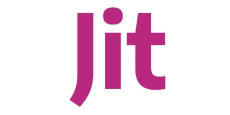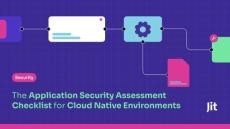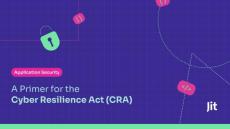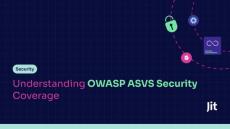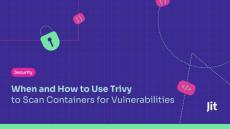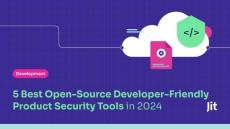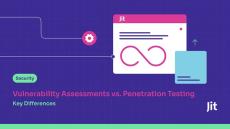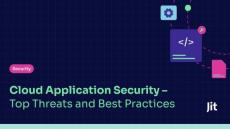|
By Charlie Klein
Free vulnerability scanners are a great way to begin scanning your cloud applications and infrastructure for security issues, and proactively resolving vulnerabilities before attackers can find them. These tools can be implemented at every stage of the SDLC, from code planning to production, depending on your preferences and objectives. As a domain, vulnerability scanners cover use cases such as code scanning, dependency reviews, and secret detection.
|
By Avichay Attlan
A cloud-based application security assessment (or ASA) is a systematic evaluation to identify vulnerabilities and improve security in cloud applications. It aims to ensure the application’s structural, design, and operational integrity against all cyber threats. A staggering 82% of data breaches in 2023 involved data stored in the cloud.
|
By Raz Probstein
At Jit, we have often spoken about different security frameworks and standards, and how they apply to practical security. One of the aspects we like to look at closely when exploring security frameworks, is the way in which engineering teams can take these good practices and apply them to their day-to-day engineering work. Essentially, how to codify or operationalize these practices.
|
By David Melamed
The Cyber Resilience Act (CRA) is a new cybersecurity regulation that aims to ensure the security of “products with digital elements” (PDEs) sold in the EU market.
|
By David Melamed
Web applications serve as the backbone of business operations, and the rise in cyber threats has put a spotlight on vulnerabilities that can compromise the integrity and confidentiality of web applications. But where to start? Security frameworks can help security and development teams understand the top risks and how to harden their applications against them, while guiding technical professionals on how to protect their applications against attacks.
|
By Liron Biam
Containers are integral to modern application development portability, resource efficiency, and ease of deployment. But there is a flip side to these benefits. Unlike traditional applications, containers bundle everything needed to run, making them a scattered setup for hidden security issues. 54% of container images in Docker Hub were found to contain sensitive information that could lead to unauthorized access, data breaches, or identity theft.
|
By Charlie Klein
A Software Bill of Materials (SBOM) inventories all of the open source components and other third-party libraries within a codebase. Much like IKEA instructions explain which parts are included in the package for your new furniture, an SBOM describes all of the third party components in your codebase. Most SBOMs contain the following information about the make-up of an application: Security vulnerabilities: a key use case for SBOM is understanding the security risks of third party components.
|
By David Melamed
As cybersecurity becomes increasingly important in software development, the “shift left” security approach is widely recognized as a best practice for ensuring superior application security. Numerous traditional security firms are introducing shift-left products and capabilities, and the concept is gaining traction. However, some open source application security tools are more developer-friendly than others.
|
By Moshiko Lev
In the race for technological innovation, companies often sprint toward product launches but find themselves in a marathon when fixing vulnerabilities. This dichotomy poses a significant challenge, especially with the ever-increasing security loopholes. CISA recommends addressing critical issues in less than 15 days, but it may be wishful thinking. IT teams are inundated with an ever-increasing volume of security alerts, making it challenging to prioritize and address each one effectively.
|
By Moshiko Lev
Cloud workloads continue to grow as new digital innovations arise monthly in the worlds of IoT applications, cloud services, and big data analytics. However, the cloud's dynamic and often complex nature can make cloud application security challenging. This gap in cloud security readiness is a growing concern for organizations worldwide, with CISOs feeling the pressure. 61% of CISOs feel unequipped to cope with a targeted attack, and 68% expect such an attack within the following year.
|
By Jit
Learn how Jit's unique developer UX makes continuous code security exceptionally easy to adopt.
|
By Jit
Learn how Vana was able to improve their product security without having to hire any in-house expertise on code and cloud security.
|
By Jit
Aviram Shmueli, a cofounder at Jit, provides an overview of DecSecOps and explains its benefits compared to traditional product security practices that rely on surfacing vulnerabilities in production.
|
By Jit
Aviram Shmueli, a cofounder at Jit, explains some of the common vulnerabilities that can be mitigated with DevSecOps, which includes coding flaws that expose SQL injection or cross-site scripting vulnerabilities, to security issues in your third-party dependencies.
|
By Jit
Aviram Shmueli, a cofounder at Jit, discusses the importance of integrating DevSecOps into developer tooling like GitHub and Slack.
|
By Jit
Learn about the DevSecOps metrics you can use to measure the efficiency and effectiveness of your code and cloud security program.
|
By Jit
Learn how Jit enabled a culture of security at ShopMonkey by integrating scanning into every code change.
|
By Jit
Jit is LIVE with #AWS! Join us for the THIRD and FINAL episode in our series on cloud security! David Melamed, PhD will discuss ‘Protecting a Modern App (part 2) - from AWS deployment to cloud-native vigilance’ on #TheBigDevTheory - hosted by Stuart Clark, and joined by guest Toni de la Fuente.
- May 2024 (7)
- April 2024 (21)
- March 2024 (11)
- February 2024 (9)
- October 2023 (3)
- September 2023 (3)
- August 2023 (1)
- June 2023 (3)
- May 2023 (2)
- March 2023 (1)
- February 2023 (2)
Jit is the easiest way to secure your code and cloud, providing full application and cloud security coverage in minutes. Tailor a developer security toolchain to your use case and implement it across your repos in a few clicks.
Jit empowers developers to own the security of their code without ever leaving their workflow, prioritizing the alerts that matter. Using your current security toolset with Jit, your devs can deliver secure code faster than ever.
Full Security Coverage in Minutes:
- Iterative scanning within the PR makes Jit easy to adopt for developers: Fast and automated scanning within GitHub make security checks feel like quality checks, so developers can easily incorporate Jit into their day-to-day.
- Gamified security tracking per team: Every team can monitor their security score, which is based on open vulnerabilities in their repos.
- Leverage an open and extensible orchestration framework: Easily plug any tool into Jit’s extensible orchestration framework to unify the execution and interface of any security tool, enabling a more consistent DevSecOps experience.
The easiest way to secure your code and cloud.


